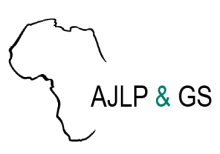Land Library Search
Through our robust search engine, you can search for any item of the over 73,000 highly curated resources in the Land Library.
If you would like to find an overview of what is possible, feel free to peruse the Search Guide.
/ library resources
Showing items 1 through 9 of 216.AbstractContext and background:The Sagara hills provide key ecosystem services to the communities in Kongwa and Mpwapwa districts in Dodoma region. In particular, the hills provide watershed services which is vital in a challenging semi-arid condition.
Context and objectives:Climate extremes associated with wet and dry conditions are one of the main causal elements of the disasters that adversely impact Uganda`s agriculturally based economy.
Vietnam is both at risk from and contributing to climate change.
The current study shows the results of an assessment of the performance of the seed sector in Egypt. It elaborates bottlenecks and ambitions towards the development of a well-functioning seed sector that is innovative, competitive, resilient and inclusive.
Context assessment of the Agroecological Living Landscape (ALL) where the activities of the CGIAR Initiative on Agroecology are implemented. The All is situated in the Fatick department in the southeast of the groundnut basin.
Cognizant of the centrality of food systems
in a rapidly urbanizing world amidst
environmental and health risks, the
Resilient Cities Initiative will strengthen
capacities for research and innovation in
the management of urban food systems in
Wheat is a global staple crop, which contributes 20% of the total dietary proteins and calories. Despite its importance, wheat production and productivity are affected by various biotic and abiotic stresses.
A Digital Twin (DT) is a digital representation of reality. This report explores the implementation of DT in the context of basin scale water management, with a particular focus on developing countries.
There is growing recognition that a better understanding of how food systems respond to crises is critical to build and protect the food security of local populations. But rigorous and reliable methods to measure food system resilience are still missing.


